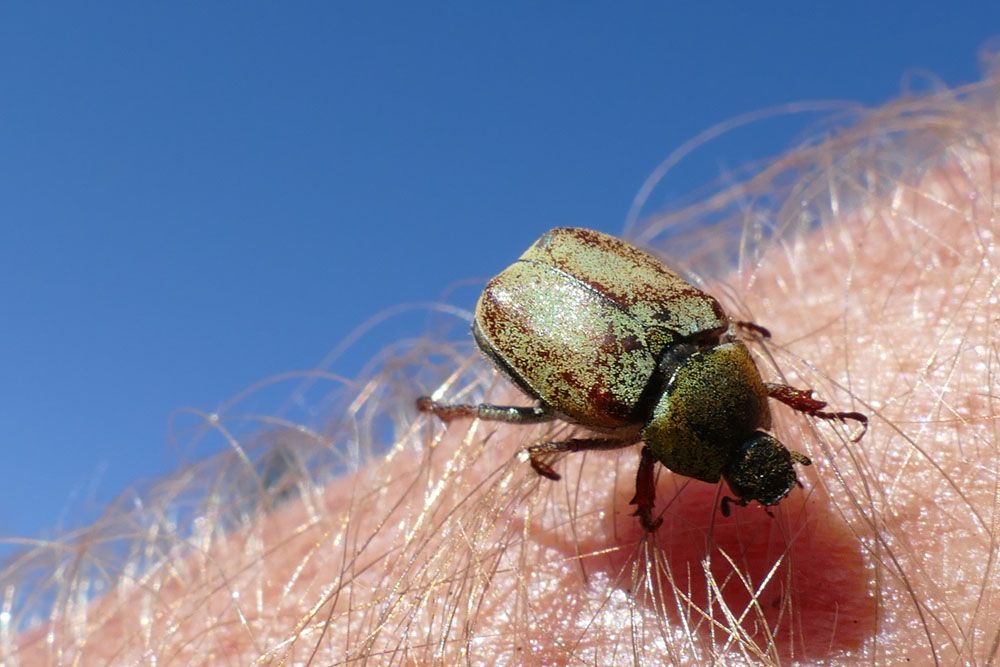
Hoplia Beetle – Hoplia callipyge
Hoplia Beetle: Appearance, Territory, Damage and Life Cycle
Latin Name: Hoplia Callipyge
Appearance: The Hoplia beetle is a frequent pest of roses and other plants across California, particularly in the Central Valley. Because it only produces one generation each year, it is only an issue from late March to May, when the adult beetles feed on light-colored blooms. The mature beetle is oval in shape and about a quarter-inch long. The head and thorax are a dark reddish brown, while the wing coverings range from dark to light brown. In sunlight, the majority of the body is a lovely, iridescent silvery green. Small crescent-shaped grubs that reside in the soil are the larvae. The Hoplia beetle belongs to the same family as the Japanese beetle and is occasionally confused with that bug. However, there are presently no confirmed Japanese beetle populations in California. The Hoplia beetle is sometimes commonly misidentified as the rose chafer.
Hosts Plants: Hoplia beetles eat calla, citrus, irises, lilies, magnolia, olive, peonies, poppies, and strawberry blooms, as well as the young leaves and fruit of almonds, grapes, and peaches.
Territory: These are native beetles in North America.
Damage Insect Cause: Adult Hoplia beetles are drawn to light-colored flowers and eat circular holes in the petals of white, yellow, apricot, and pink roses. Although their gnawing can kill the early buds and blooms of a rose, the beetles do not dine on the leaves. Hoplia beetles eat calla, citrus, irises, lilies, magnolia, olive, peonies, poppies, and strawberry blooms, as well as the young leaves and fruit of almonds, grapes, and peaches.
Life History and Habits: Female beetles lay glossy, white eggs on alfalfa fields, pastures, and other undeveloped vegetation, such as fences and ditches. The larvae eat decaying leaves and plant roots; however, they don’t eat the roots of woody plants. They take a long time to mature, spending the whole winter as larvae or pupae. Adult beetles emerge from the earth in early spring after completing their development. Adults take to the skies and feast on roses and other flowers in gardens. Adults are most active between late March and early May. Adults return to their egg-laying sites after many weeks of feasting. There is just one generation every year.
